Introduction of Parking in India
Important Point
Concerning the population, India stands 2nd in the world. The growing community of India, urbanisation, has introduced many recent problems, one of which is “Parking”.
The term, “Parking” indicates, placing of a vehicle temporarily in a particular place, designated for that purpose. The places where the cars are parked are termed as parking spaces.
In the early days, Parking of vehicles had not caused many problems, due to the lesser number of vehicles and lesser population compared to the present.
As the industrial development eventually took place, the number of urban cities increased, resulting into a growing economy in every household.
This resulted in a higher rate of production of vehicles as well as a higher rate of use of cars. As the higher number of residential and building projects are undertaken in an urban city, due to a constant amount of space within a country, the lack of parking spaces, are increasing day by day.
In recent days, one of the challenges that we confront every is car parking. Besides the space for the cars, moving on a road, more significant is the problem in the critical area for parking vehicles, as private cars remain parked most of the time.
While residential buildings nowadays allow spaces for temporary car parking, the main problem occurs in commercial places, where the number of vehicles that comes to the park is almost uncertain in an instance of a day.
Parking is one of the significant problems which are created by increasing road traffic. It is the impact of transport development.
The availability of less area in urban regions has necessitated the importance of Parking spaces, particularly in regions like Central business area.
Thus efforts have been given to find the alternatives of the vehicle parking spaces, using the advanced technology of nowadays and modern construction techniques.
Also, Read: Road Development Plans in India
What Is Parking?
- Parking is the act of stopping and disengaging a vehicle and leaving it unoccupied.
- Parking on one or both sides of a road is often permitted, though sometimes with restrictions.
- Some buildings have parking facilities for use of the buildings’ users.
- Also, the act of a person or thing that parks, especially a vehicle. space in which to park vehicles, as at a place of business or a public event
Parking Statistics
To find a systematic approach and cost-effective solution to parking problems, observation on the number of vehicles are taken.
These are known as parking studies, which saw our detailed information on the number of cars parked in a place for an instance.
Based on these studies, Parking Statistics is established, which includes the taken information, in the form of numerical data. The parking Statistics includes,
- Parking Accumulation
- Parking Volume
- Parking load
- Average parking duration
- Parking Index
#1. Parking Accumulation
- It is defined as the number of vehicles parked in a specific region for any instance of time.
- It is denoted with a curve known as Accumulation Curve, which gives an estimate about the total number of vehicles occupying each bay at a specific time.
#2. Parking Volume
- This is defined as the total number of vehicles which are parked in place, for a given duration of time.
- It is generally a broader aspect of Parking Accumulation mentioned earlier.
#3. Parking Load
- It can be obtained by multiplying the total number of vehicles occupying the parking area at each time interval with the whole break.
#4. Average Parking Duration
- It is generally the ratio of the total parking hours with the number of vehicles parked.
- Average Parking Duration Equation
Parking Duration = [ Parking Load / Parking Volumne ]
#5. Parking Index
- It is the most important term in parking Statistics, which gives an aggregate idea about how effectively the parking space can be utilised.
- It is defined as the ratio of the number of the bays occupied in a given time duration with the total area available. In other words, it is the ratio of the parking load with the parking capacity.
- Parking Index Equation
Parking Index = [ Parking Load / Parking Capacity ] X 100
Also, Read: What Is a Classified Road | Classification of Roads in India
Useful Article for You
- What Is a Contour Interval
- What Is Tile
- What Is the Difference Between a Shower Pan and a Shower Base?
- What Is a Window Panel
- Type of Arch
- What Is a Frame Structure
- What Is the Measurement for a Queen Size Bed
- What Is Considered Livable Space
- What Is One Way You Can Save Electricity?
- What Is Mdf Mean
- What Is a Bundle of Shingles
- What Is a Gallon of Water Weigh
- What Is Sand Blasting
- What Is a Span Bridge
- What Is the Little Black Diamond on a Tape Measure
- What Is a Louvered Door
- What Is a Spread Footing
- What Is Leveling
- Different Types of Beam
- What Is Pedestal
- What Is Plumbing Fixtures
- What Is Slab Construction
- What Is Calacatta Quartz
- What Is Auxiliary View
- Sheepsfoot Roller
- Live Load Vs Dead Load
- What Is 1 Flight of Stairs
- What Is Refractory Cement
- Dry Pack Concrete
- What Is Luminous Flux Vs Lumens
- What Is a Frost Wall
- What Is an Undercoat
- What Is Road Pavement
- Arch Foundation
- What Is a Stair Landing
- What Is Stone Masonry
- What Is a Spandrel Beam
- What Is Pier and Beam Foundation
- What Is Levelling
- What Is a Pile Cap
- What Is a Mat Foundation
- What Is a Floating Slab
- What Is the Purpose of Foundation
- What Is Modulus of Rupture
- What Is a Flush Door
- What Is Residential Construction
- What Is the Best Foundation for a House
- What Is a Benchmark in Surveying
- What Is a Engineering Drawing
- What Is an Admixture
- What Is a Monolithic Slab Foundation
- What Is the Standard Size Water Supply Line
- What Is the Difference Between Tension and Compression?
- What Is a Tremie
- What Is Tributary Area
- What Is Shoring Construction
- What Is a Cason
- What Is Wall Putty
- What Is the Difference Between Mortar and Concrete
- What Is Bhk
- What Is Sbc of Soil
- What Is Plinth Level
- What Is Water Proofing
- What Is Mix Design of Concrete
- What Is Fine Aggregate
- What Is Retention Money
- What Is Design Mix
- What Is Isometric Scale
- What Is Development Length
- What Is Superelevation
- What Is Wall Made Of
- What Is Micro Piling
- What Is Soil Stack
- What Is a Half Wall Called
- What Is Flagstone
- What Is a Cinder Block
- What Is Floors
- What Is a Parapet in Construction
- What Is Concept Drawing
- What Is a 30 Degree Angle
- What Is a Mezzanine Level
- What Is Plinth Area
- What Is Precipitation
- What Is a Soffit
- What Is the Difference Between Residual and Transported Soil
- What Is a Drop Manhole
- What Is Oblique View
- What Is a Flyover Bridge
- What Is Tie Beam
- What Is the Cost of 1 Bag Cement
- What Is Well Foundation
- What Is the Principle of Chain Surveying
- What Is Dlc in Road Construction
Types of Car Parking
Depending upon the space available, nature of the areas and an approximate estimation of the traffic on that place, there are various types of parking in use.
The type of parking is determined by its controlling agencies which mostly depends upon the traffic of that place itself. Some of that parking is
- On-Street Parking
- Off-Street Parking
- Parallel Parking
- 30 Degree Parking
- 45 Degree Parking
- 60 Degree Parking
#1. On-Street Parking
This type of parking is prevalent for places where the open spaces are not available much, and there are residential & commercial places (example- offices, cinemas etc.) Situated beside the roadside.
These types of parking are generally controlled by government agencies itself. The controlling agencies also regulated the nature of vehicles which will be allowed to park in on-street parking.
As per IRC standard, the actual size of a car is taken as 5×2.5 meter, and that of a truck is 3.75×7.5meter
#2. Off-Street Parking
This type of parking is suitable where there are plenty of spaces available near the commercial or industrial establishments for the vehicles to park.
Mostly used in European countries, this type of parking is controlled by its respective commercial agencies.
#3. Parallel Parking
In this type of parking, the vehicles are parked along the length of the road. This is the safest type of parking among all other options, from the aspects of accidents, as there is no backward movement associated with the vehicle to be parked.
But the main drawback of this type of parking is that every car occupies maximum curb length; therefore a minimum number of cars to be parked in a given curbed distance.
This type of parking produces least obstruction to the road track as road length is being utilised.
#4. 30 Degree Parking
In this type of parking, the vehicles are parked at an angle of 30degree with the road alignment. This type of parking allows more cars to be parked as compared to parallel parking.
This type of parking also provides greater control of manoeuvre over the vehicle.
#5. 45 Degree Parking
Similar to that of the 30degree parking, in this type of parking, the vehicles are placed at 45 degrees with road alignment. More number of cars can be accommodated in this type of parking.
#6. 60 Degree Parking
The vehicles are placed at 60degree with the road alignment in this type of parking.
Also, Read: What Is Camber in Road | Types of Camber | Advantages of Camber in Road
How to Park a Car Perpendicular?
Shift the gear to “Drive” (D) and slowly move forward; turn the steering wheel right to straighten your wheels and move to the centre of the parking space.
Your car should be parked within 18 inches of the curb. Shift gears to “Park” (P), turn off the engine and set your parking brake.
or
This type of parking is also termed as90degree or right-angle parking. In this type of parking, the vehicles are placed perpendicularly with the road alignment.
Although it requires maximum width, the kerbed length required is minimum, and therefore this type of parking can accommodate a maximum number of vehicles to be parked.
The main drawback of this type of parking is that it requires complex manoeuvring system and thus cause severe accidents. This type of parking is very little in use.
To park a vehicle perpendicularly with the road alignment, the following steps should be followed—
- Start the vehicle a certain distance away from the parking space. This additional space is required for the car to accurately ascertain the parking line & parking space.
- Then the turn signal is used. This is included in the traffic laws and must be done at all times; a vehicle tends to park.
- Slow forward driving is maintained. When the side mirror becomes touches the first line of the parking space, turning of the vehicle should be done to align the car on the centre of the parking space.
- After the vehicle is fully parked in parking space, stop the car and the parking procedure is finished.
Parallel Parking Rules
Step-by-Step Guide for Parallel Parking
#1. Position
Position your car parallelly along with the car that is in front of the vacant spot. Maintain a three to four feet distance from that car.
#2. Mirror
Check all the mirrors to avoid bumping your car. Hit the reverse gear and accelerate after you are convinced that there is no one near the vacant spot.
#3. Reverse
Turn the steering wheel to the right and reverse your car as you approach the vacant spot.
#4. Straighten
Straighten the steering as you enter the parking area. Keep checking the mirrors while moving backwards.
#5. Steer Left
After your car has entered the vacant spot and is close to the rear bumper of the vehicle in front, turn your car’s steering to the left and keep reversing.
#6. Adjust
You will have to move your vehicle a bit forward and a bit backward to get the right placement. Adjust your car accordingly.
#7. Check
Check for space between your car and the one in front and behind it. Make sure there is ample space for you and the other cars to move out of the Parallel Parking
Also, Read: What Is Drip Irrigation| Drip Irrigation Advantages | Types of Irrigation | Drip Irrigation System
Useful Article for You
- Zero Force Members
- How Much Does a Yard of Concrete Weigh
- Cmu Wall Meaning
- Gradient Road
- Budget Sunroom Ideas
- What Is Gypsum Board
- Types of Vaulted Ceilings
- Well Points
- How Does Baking Soda Remove Blood from Carpet
- What Are Forms in Construction
- How Heavy Is Dirt
- Tender Meaning in Architecture
- Dark Olive Green House
- Cast in Place Concrete
- Lean to Roof
- How Tall Is an Average Door
- Grade Beam Foundation
- Window Sill Height
- Concrete Cold Joint
- Types of Traps
- Types of Pipe
- Wood Supporting Beams
- Finishing Plaster
- Home Depot Scrap Wood
- Lvl Beam Size Calculator
- Structural Shell
- Curb Types
- Msand
- Optimum Dry Meaning
- Disadvantages of Low-E Glass
- Bridge Abutment Definition
- Build Materials List
- Composite Masonry Wall
- Is Cedar a Hardwood or Softwood
- Modified Proctor Test
- Physical Properties of Sand
- Crane Machine Construction
- Types of Gable Roofs
- Door Frame Types
- How Much Does 55 Gallons of Oil Weigh
- Dog Leg Stairs
- Concrete Salt Finish
- Westpoint Bridge Builders
- Types of Porches
- Hempcrete Disadvantages
- Roof Pitch Types
- Types of Weirs
- Asphalt Floor
- Dutch Roof
- #6 Rebar Weight Per Foot
- Prizmatic Compass
- Bond Break Concrete
- Poured Concrete Wall Cost Calculator
- How Many 60 Lb Bags of Concrete in a Yard
- Wood Fence Post Spacing Chart
- Falsework
- Design of Building Structures
- Topping Slab
- Types of Cinder Blocks
- Fresh Concrete
- Door Colors for Red Brick House
- Clear Cover Concrete
- Tiles Brand
- Cement Consumption in Plaster
- Aggregate Density Kg M3
- Weight of Concrete Slab Calculator
- Is Clay Smaller Than Silt
- How to Calculate Dead Load
- Bad Concrete Work
- Stepped Foundations
- Residential Construction Cost Estimator Excel
- Different Construction Trucks
- Septic Pump Replacement Cost
- Dead Load Calculator
- Beam Vs Column
- Concrete Mix Ratio
- Caisson Foundation
- Glulam Beam Weight Calculator
- Bituminous Pavement
- M30 Mix Ratio
- Is 2502
- Reinforced Brick Work
Types of Parking Spaces
There are many types of parking facilities available, both indoor and outdoor, public or private. Depending upon the nature of the parking facilities, they can be classified into several types, such as
- Parking Lot
- Parking Garages
- Carports
- Automated Parking System(APS)
- Semi-Automated Parking System
#1. Parking Lot
A parking lot is generally an area assigned for parking. This types of parking spaces can be made by marking an open space area with white or yellow lines to construct squares, within which the vehicle can be accommodated.
Parking lots are used for commercial establishments such as cinema halls, shopping malls, restaurants etc.
Parking lots are opened throughout the year, but many a time it can be made for specific events.
#2. Parking Garages
This is the most common types of parking systems available. Parking garages ensures complete safety of the vehicle and needs lower maintenance and operational cost, lower construction cost to be incurred.
Depending upon nature, the parking garages can be classified into the following categories:
- Single level parking garage: consists of only one floor for parking.
- Multi-level parking garage: consists of several floors or levels for parking.
- Underground parking garage: where there is less space available due to high traffic.
- Automated parking garage: garage with fully automated parking system.
#3. Carports
Carports are generally located on people’s driveways next to their house. The carports are private property which comes with the place where one or more cars can be stalled.
The carports do not have four walls; usually, they have two partitions, sometimes the walls of the carports can be attached to the house.
The main advantage of carpets is that they protect the vehicles from bad weather condition such as rain, snow etc.
#4. Automated Parking System(APS)
This type of parking system incorporates advanced technology. Automated Parking System or APS is a mechanical system that moves the cars from the entry of the parking space, to it’s designated place.
It uses many levels to stack the vehicles vertically; thus, less land is consumed, and maximum cars can be parked in this type of parking system. It’s fully automatic and doesn’t require any human staffs.
#5. Semi-Automated Parking System
This type of parking system is similar to that of the Automated Parking system, the only difference is that Semi-automated parking system requires human action to work, either by a driver or an attendant. This action can be done by using a button.
Average Parking Space Size
Average parking spaces, the size tends to be around 7.5 to 9 feet in width and about 10 to 20 feet in length. It’s important to note that oversized standard parking widths can pose a higher accident risk and reduce the number of parking spaces available as a whole.
Parking Spot Size
Some parking lots restricted to compact cars may have lengths as small as 10 feet, but for the most part, the standard parking space length is between 16 to 20 feet (5 up to 6 meters), with most parking spaces measuring at 19 feet.
Parking Spot Dimensions
The minimum size of a standard parking space shall be nine feet wide and eighteen feet long. Parking spaces within enclosed garages shall have an interior dimension of at least ten feet wide and twenty feet long. The minimum size of a compact parking space shall be eight feet wide and sixteen feet long. B.
How Do You Calculate Parking Space Ratio?
Parking ratios are calculated by dividing the total rentable square footage of a building by the building’s total number of parking spaces. This provides the amount of rentable square feet per each individual parking space, and is typically expressed as 1 parking space per 200 SF or 5 parking spaces per 1,000 SF.
Parking Standard Dimensions
In North America, the standard parking space dimensions range between 8.5 to 9 feet wide by 18 feet long. Parking lot aisles will have a space between rows ranging between 14 to 24 feet, depending on whether they’re a one-way or a two-way aisle.
Standard Car Parking Space Dimensions
The minimum size of a standard parking space shall be nine feet wide and eighteen feet long. Parking spaces within enclosed garages shall have an interior dimension of at least ten feet wide and twenty feet long. The minimum size of a compact parking space shall be eight feet wide and sixteen feet long.
Car Parking Dimensions in Feet
Here, the case parking dimensions in feet tor difference contrary are as follows.
| Sr.No. | Contry | Size In ft. | Area in Sq.ft. |
| 1 | Car Parking Space In United States | 8.5 ft x 18 ft | 153 Sq.ft. |
| 2 | Car Parking Space In United Kingdom | 7.84 ft X 15.75 ft | 123.50 sq.ft. |
| 3 | Car Parking Space In India | 7.84 ft X 15.75 ft | 123.50 sq.ft. |
Like this post? Share it with your friends!
Suggested Read –
- Vertical Alignment Definition
- Nail Vs Screw | What Are Nail | What Is Screw
- Difference Between CPM and PERT | What Is CPM & PERT
- Top 10 Companies for Environmental Engineers to Work For
- Difference Between One Way Slab and Two Way Slab | What is Slab
- How is Concrete Made | What is Concrete | Components of Concrete | How to Mix Concrete
- What Is Roller Compacted Concrete | Advantages & Disadvantages Roller Compacted Concrete

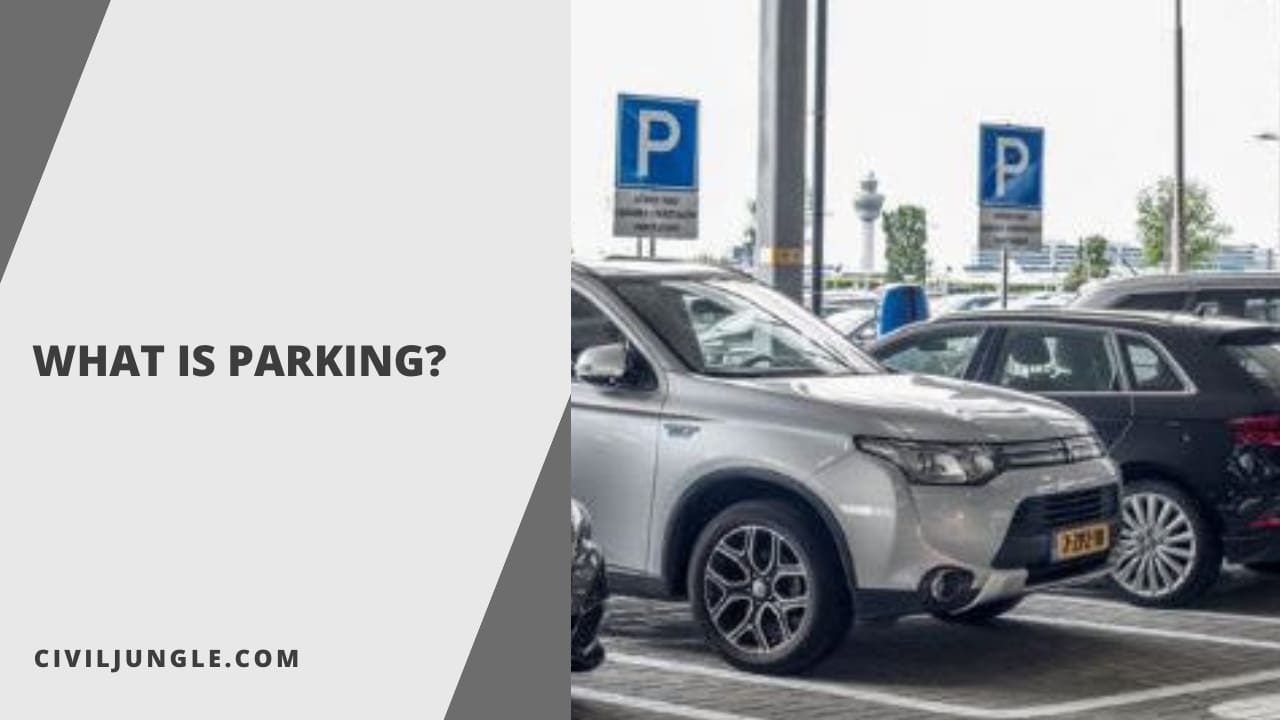
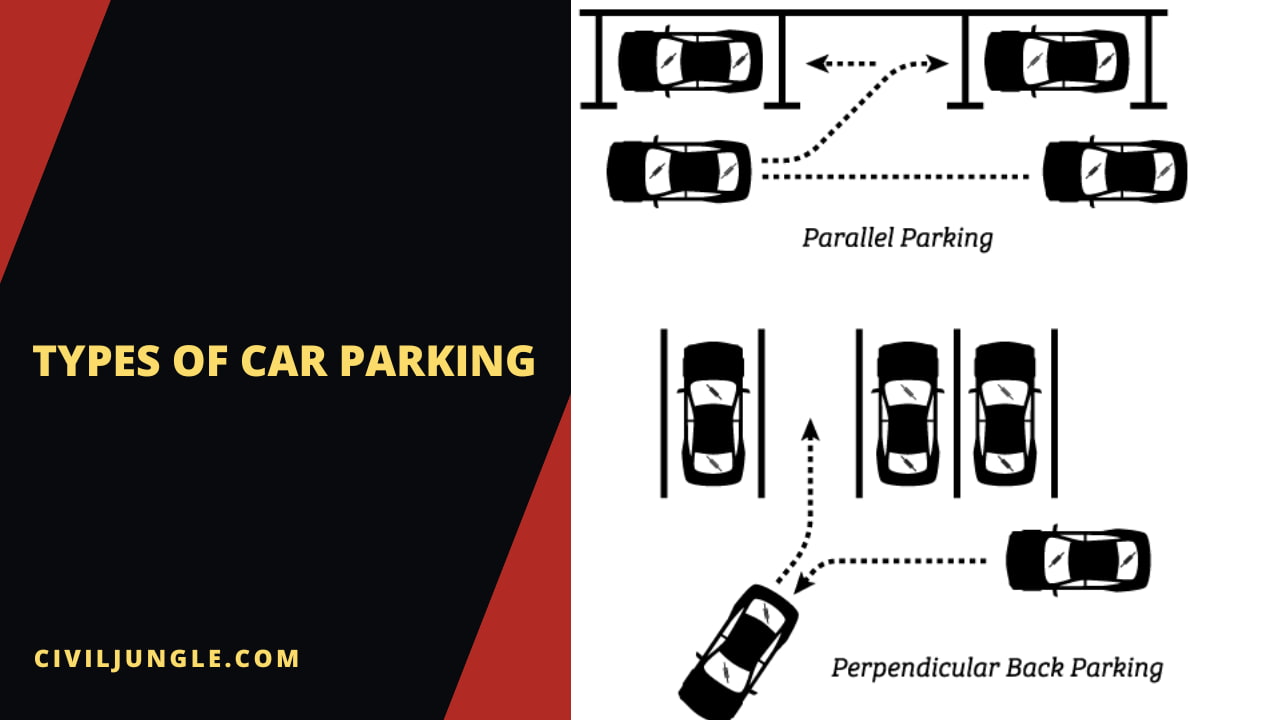


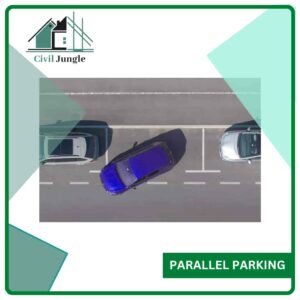
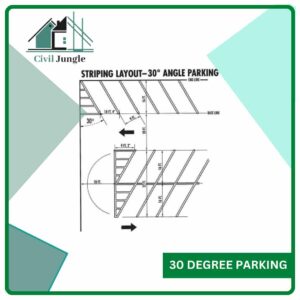
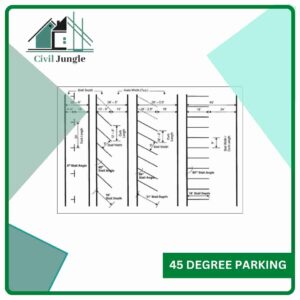
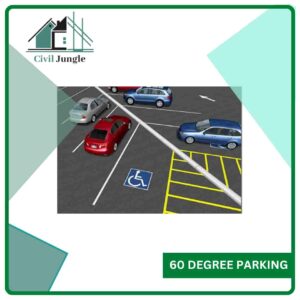
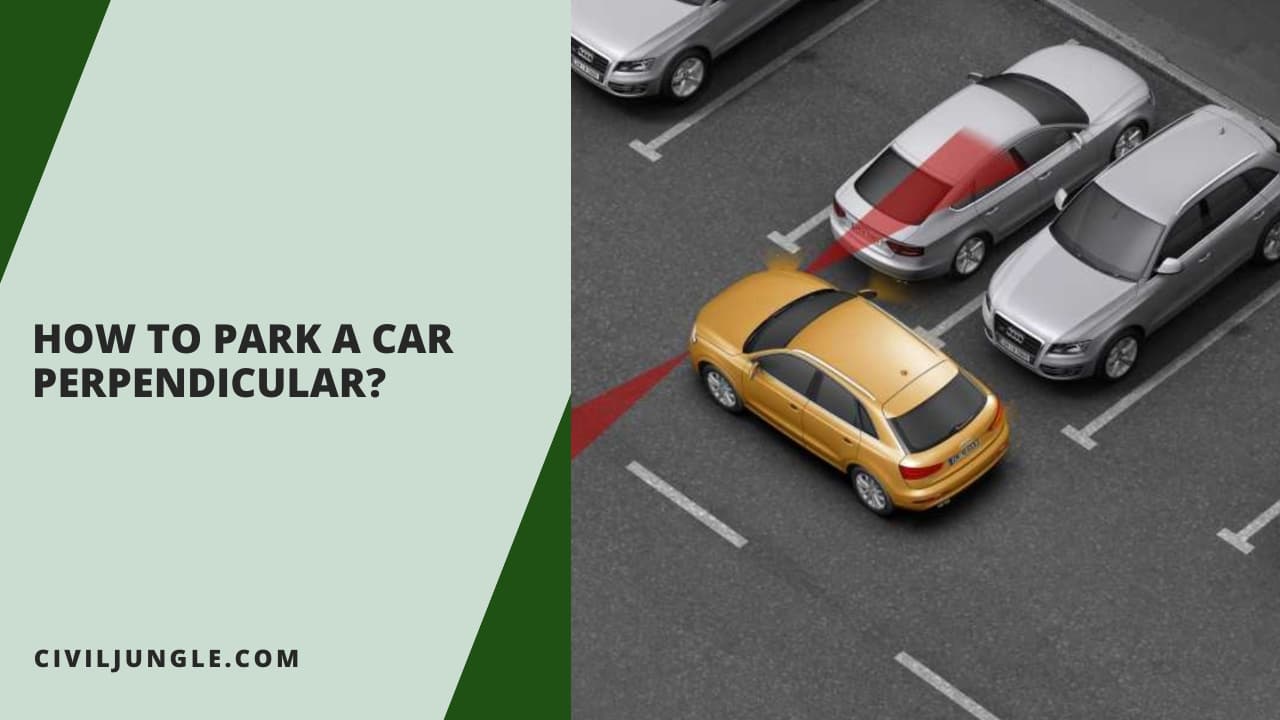
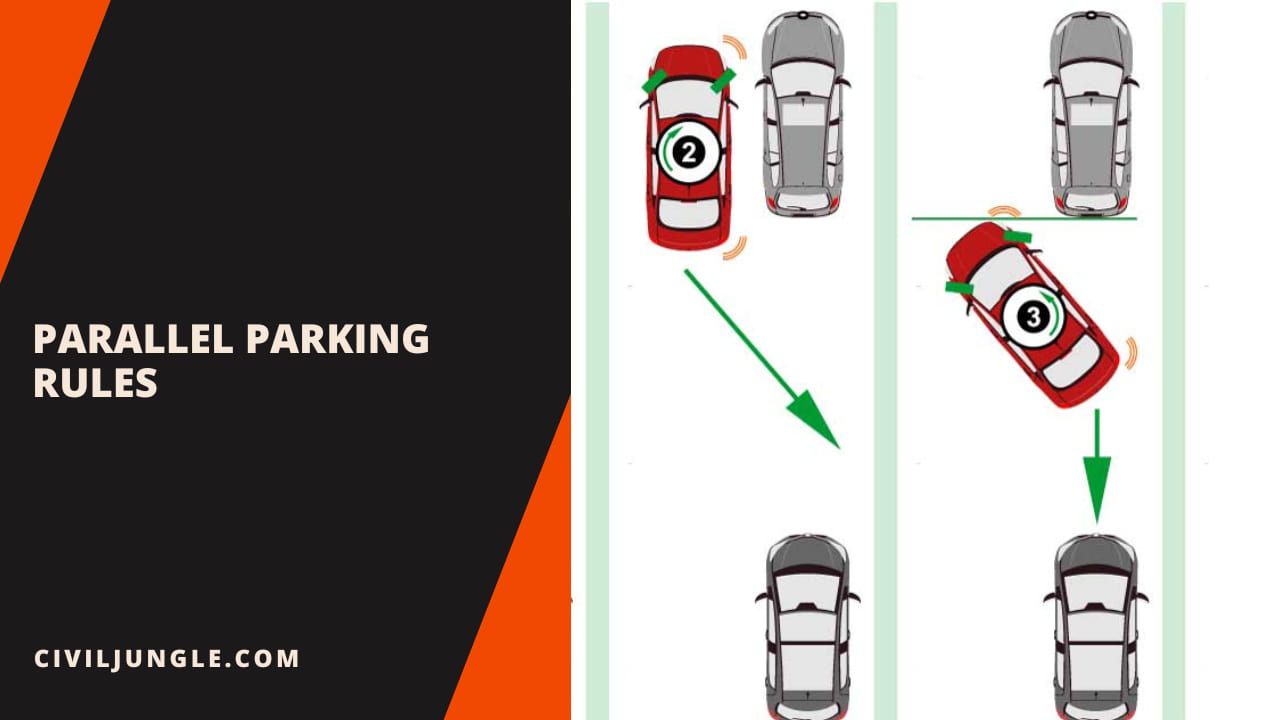
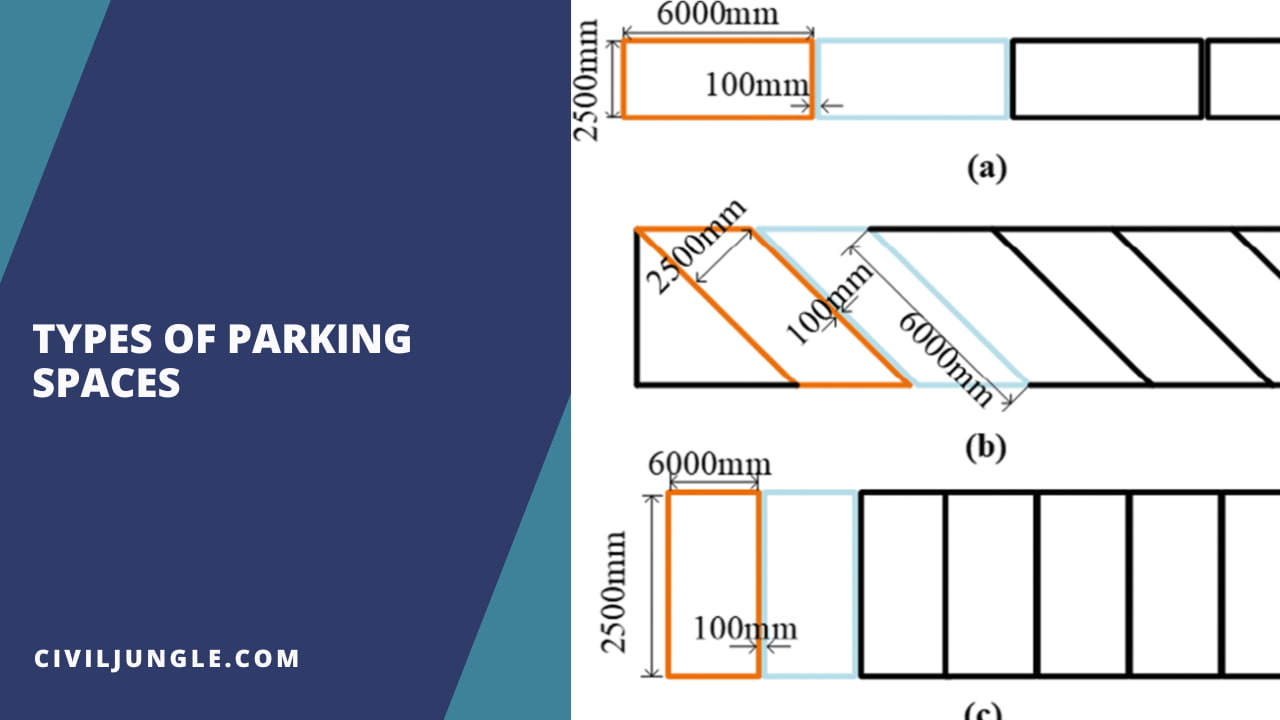


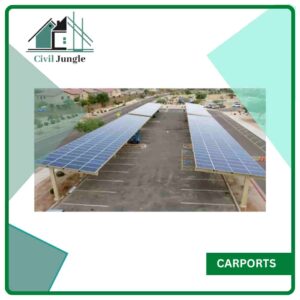
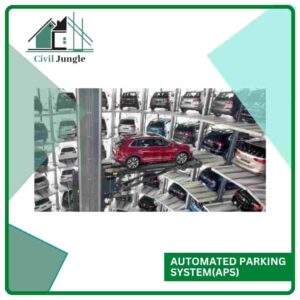
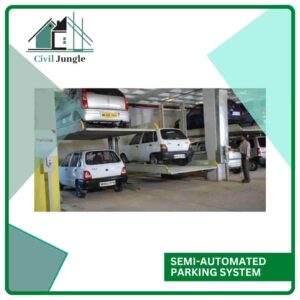

There is parking issue in many countries specially area which are highly populated like in India and foreign countries. There is need to systematic management of vehicles parking to avoid inconvenience parking of vehicles.